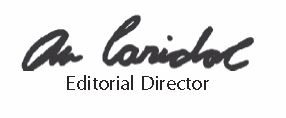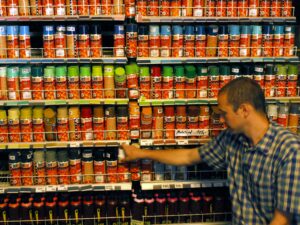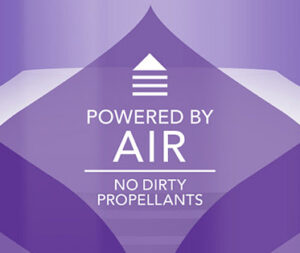Years ago, I lived in Perth, on the west coast of Australia. Those cheeky Australians love to shorten words—for instance, afternoon is referred to as arvo, a cup of tea is a cuppa and football (or soccer) is called the footy. Perth’s Central Business District was nicknamed the CBD. Many cities, of course, have a CBD, but Perth’s is special to me because it was there that I first heard the term, so therefore, in my particular world view, the phrase must have been invented there.
The CBD was a fun place, full of bookstores, cinemas, cafés, The West Australian Symphony Orchestra and the hum of business getting done. Say “CBD” and my ears prick up, because I used to love visiting the heart of that lovely city so much.
Then, a few years ago, I started to hear the term “CBD” more often. The thought that there could, possibly, be more than one phrase claiming the CBD acronym had never occurred to me. Why was everyone suddenly so interested in the City of Perth’s Central Business District?
Well, they actually weren’t. As most readers will know, CBD stands for cannabidiol, a compound found in the cannabis plant. Not many consumers had heard of CBD prior to the passing of the U.S. 2018 Farm Bill that legalized hemp farming. However, since then, all types of products infused with CBD have come to market very quickly, with no end in sight.
This issue of SPRAY takes a look at the latest spray products to incorporate CBD into their formulas. You won’t find any pot-head marketing with iconic marijuana leaves and Cheech & Chong driving by in a magic bus with these products; instead brands take a firm position in the popular “Health & Wellness” category, toting benefits such as pain, inflammation or nausea relief, anxiety reduction and cardiovascular health. CBD can make your skin glow, your hair shine and your muscles relax.
Passing fad or long-term wellness ingredient, SPRAY will be sure to keep readers up-to- date on the latest CBD and hemp products in aerosols and pumps, as well as all other up- and-coming consumer trends.
Annual Buyers Guide
This issue also includes SPRAY’s 2021 Buyers Guide. We have compiled everything needed for packaging a new spray product into this useful resource guide, which lists a variety of special services, components and raw materials. We are also featuring its companion piece, the 16th edition of Corporate Profiles, which provides the latest information from the companies committed to providing the most up-to-date products and services for our industry. The Buyers Guide is also offered online and can be found in our digital version, as well. Visit www.spraytm.com for more information.
If your company is not represented or under-represented, or even represented incorrectly, please contact me at acaridad@spraytm.com. Each year, we strive for accuracy and try to make the Buyers Guide more streamlined and efficient than the year before. We can only do this with your help and participation, however.
Please review the Buyers Guide and determine if your company is properly represented; a matter of updating contact details can sometimes be all it takes to make sure accuracy prevails.

Many of you long-timers in this industry will remember that March 30, 2021 marks the 40th anniversary of the day President Ronald Reagan survived being shot in Washington, DC. It is a time that is particularly memorable for me because it was the first day on my new job as Advertising Sales Representative at Industry Publications, publishers of the then titled Aerosol Age. A lot has happened in those 40 years, among them the renaming of the magazine to Spray Technology & Marketing; I think there are still some aerosol industry loyalists who have yet to forgive us.
However, the best part of my long career has been the many friends and associates I’ve met along the way; I think few industries are fortunate enough to experience the type of strong friendships like those forged in the aerosol industry. We have gathered to work at our craft in many wonderful places on most of the continents—from Chicago to Napa Valley to Nice, Rome and Buenos Aires. Who remembers the fabulous events like the cocktail party and private tour of the Prado Museum in Madrid? The daily walks through St. Marks Square in Venice to attend an FEA conference? The oyster bakes on Kiawah Island and the mechanical bull in San Antonio? I’ve never quite figured out how I got so lucky to work in an industry that showed me the world over the course of a career among such wonderful people.
It hasn’t all been jet-setting and hi-jinks, of course. There were some very trying times that, while not fun, still managed to pull us all together as an industry and as colleagues, such as fleeing wildfires while attending a WAIB meeting in California or fleeing lightning at suddenly-rained-out golf outings, where we commiserated together in the clubhouse as we dried out.
Behind the scenes of SPRAY, there were many other challenges, as well. I recall as if it were yesterday trying to get the October 2001 issue out just days after the national tragedy of 9/11. Many readers won’t know that our offices were closed for a full 10 days and saw several computers ruined following the destruction of Hurricane Sandy, yet we never missed deadline. And just last year, we managed to get 12 issues out smoothly while in the throes of a global pandemic.
My time in the aerosol industry has spanned what I call the “entrepreneurial generation” to what most now consider the “corporate generation.” For me, the early 1980s can be documented by photos of golf foursomes with early industry powerhouses like Gordon Gilroy, Don Rowson, George Ford and Howard Pound; meeting up at FEA events with Bunny Lapin, Bob Abplanalp and the global set, as well as enjoying steak dinners and stone crabs at the best restaurants with George Barr and other industry luminaries. As a 20-something, that was all pretty heady and glamorous.
As the calendar turns to 2021, I will have retired from Industry Publications and so say goodbye to the industry that is filled with such very special people and fond memories. It has been quite a run, with many tearful farewells. However, friendships are enduring so I have decided to just say farewell, for now.
Cindy Hundley
Publisher



 By Ava Caridad, Editorial Director
By Ava Caridad, Editorial Director
In November, New Jersey Governor Chris Christie signed bill S1909, which will remove approximately two dozen antiquated and anachronistic statutes from the state’s books. The bill addresses laws that have been “superseded or invalidated, or which are anachronistic in nature — i.e. belonging to an earlier time and irrelevant in the current legal, political, and social climate.”
It made sense to repeal some of the laws, which included permitting stallions, bulls and rams to run at large; forbidding occupations to persons infected with venereal diseases; killing an unmuzzled dog running at large; and feeding county prisoners.
However, a few of them didn’t really make sense to me; why is it no longer a crime to delay or detain homing pigeons or steal personal property from shipwreck victims? Anachronistic, maybe, but I think still valid in this heavily populated, pet-loving state with its often treacherous shoreline.

Needless to say, the soon-to-be-trashed “outdated” law that really made us sit up and take notice was the one that made it illegal to “sell spray paint without posting a sign warning juveniles of the penalty for graffiti.” We here at SPRAY were scratching our heads as to why that law was considered obsolete. It seems a perfectly sound law, not archaic at all. We were stumped and Gov. Christie attached no comment to a press release announcing he signed the bill, according to Matthew Friedman of The Star-Ledger.
The recommendations to strike the laws were made by the New Jersey Law Revision Commission. We reached out to them for comment, but as we went to press, had no reply.
SPRAY also reached out to Heidi McAuliffe, Executive Director of the Graffiti Resource Council (GRC), who confirmed that the requirement to post signs in retail stores that inform aerosol coatings customers that graffiti vandalism is illegal is fairly common in many jurisdictions. It is included in the Model Anti-Graffiti Regulation that was adopted by the International Municipal Lawyer’s Association some years ago and consequently, it has been incorporated into innumerable city and municipal ordinances all over the country. It is also included in the state laws of California and Rhode Island.
The GRC includes a provision for signs in retail stores in its guidance on how to develop an anti-graffiti regulation. Its advice is based upon the IMLA Model Law as it is one element of a successful comprehensive anti-graffiti regulation, McAuliffe told us. This type of signage helps make customers aware of the law and reminds citizens of the negative impacts of graffiti vandalism.
So why was the law stricken from the book in New Jersey? We just don’t know, but are trying hard to find out. Stay tuned to SPRAY for an update to this perplexing development.
Happy New Year,
![]()


Method Target store display
The technical and commercial development of plastic aerosols has been ongoing for several years, with the Plastic Aerosol Research Group (PARG), an entity within the Consumer Specialty Products Association (CSPA), taking the lead. PARG has been supported by a long list of suppliers and marketers who see this emerging marketplace as one which will expand the market for pressurized products and essentially make for a “bigger tent”. The thinking here is that the more and varied types of spray packages there are, the more applications there will be in the pressurized product format. This variety will only serve to make the total market for aerosols, now estimated at 14 billion units globally, grow larger.
If new technologies are as sustainable and environmentally friendly as they say, the more the better. Clearly, there is consumer demand for products that are Green and sustainable. In fact, many companies in the aerosol marketplace, suppliers and brand owners alike, endeavor to increase recycling and recyclability of their products, make ingredients transparent for both consumer and environmental health, and are very proud of their sustainability efforts.
It is with all of this in mind that we report on the new air freshener from Method on page 10. Recently launched at Target stores, the Method air freshener is packaged in “100% recycled plastic,” according to the company website. What makes this product of particular interest is the claim the company articulates on its label. The product is said to contain “no dirty propellants”. Also displayed on its collateral material in stores is the phrase “Free of CFCs, dirty propellants and dirty ingredients.”

Method packaging featuring “No Dirty Propellants” message
The fact that all aerosol products have been free of CFCs for the past 35 years aside, Spray was not presented with any evidence supporting these claims in the press materials submitted for review. When we asked Method directly what was so “dirty” about propellants, its PR rep responded that it meant “derived from petroleum”. Is not a plastic bottle, originally, derived from petroleum?
It would surprise few readers to know that aerosol products using propellants are regulated by numerous laws and regulations set down by, among many others, The Federal Hazardous Substances Act (FHSA), The EPA’s Toxic Substances Control Act (TSCA), The Clean Air Act and corresponding state laws and The State of California’s Proposition 65, which requires that products contain warnings if they contain substances known to cause cancer or birth defects.

Many would consider “dirty” a marketing term, which brings us to our point.
New products and new packaging technologies are regularly presented in the pages of Spray. Some consider it a valuable sales tool to gain press support and exposure in this manner and may attribute a product’s success in the marketplace to this favorable publicity. We do, however, apply a standard to every new product that we choose to report on. We present the positive aspects of a new development or, as I learned early on in sales, features and benefits. What Method has chosen to do is disparage other products they compete with rather than promote the positives of an air freshener packaged in plastic and powered by air. We hope the marketers at Method will re-evaluate their strategy and not sell their products at the expense of others in this negative and misleading fashion.

Publisher
This month, Commentary is provided by guest editorialist, Alain D’haese,
Secretary General of the European Aerosol Federation (FEA).
The first edition of the UN Globally Harmonized System of Classification and Labeling of Chemicals (GHS) was published in 2003. Since then, the GHS has been updated, revised and improved every two years as needs arise and experience is gained in its implementation.
 The fourth and last revised edition of the GHS (GHS Rev.4) includes, among other things, a new hazard category for non-flammable aerosols. The European Union will adopt these new classification and labeling provisions early next year, but many countries in the world are currently in the process of implementing “only” the third revised edition. So discrepancies will still remain for a certain time.
The fourth and last revised edition of the GHS (GHS Rev.4) includes, among other things, a new hazard category for non-flammable aerosols. The European Union will adopt these new classification and labeling provisions early next year, but many countries in the world are currently in the process of implementing “only” the third revised edition. So discrepancies will still remain for a certain time.
Today, if innovation emerges somewhere in the world, it should offer pportunities everywhere else. The places where an idea appears and where the innovation is used on the market can be totally disconnected. In this context, it is of utmost importance that the aerosol industry continues its broad dialogue about which provisions could be (or not be) globally implemented and when.
If global provisions and standards definitely facilitate the development of the industry, it is, however, not always favorable to implement new provisions too quickly or at an inappropriate moment. For example, it has been agreed within the industry not to harmonize the content labeling of aerosols in weight or in volume, but to let all regions continue with their existing requirements. This message has been passed on to authorities and still needs to be secured at the International Organization of Legal Metrology (OIML) level.
In this global spirit, a limited number of aerosol industry representatives and national aerosol association staff meet once a year as the International Liaison Committee. The goal is to exchange experience and views in order to avoid threats to the aerosol industry and to foster opportunities.
The next meeting will be hosted by the Aerosol Promotion Council (APC) in
November 2012 in Mumbai, India. The next FEA International Aerosol Congress & Exhibition will be hosted by the Asociación Española De Aerosoles (AEDA) and will take place Sept. 24-26, 2013 in Madrid, Spain. AEDA has already organized previous editions in Barcelona in 1981 and Seville in 1993.
The relevance of our industry requires an event featuring concepts such as internationalization, globalization and innovation, and thus is reflected in the Congress slogan: “Where the aerosol becomes global”. As usual, this event is designed for a large worldwide aerosol audience and is definitely the place to be! For more information, please visit www.aerosolmadrid2013.com.
I hope to meet you at these events.
School’s out for kids and they are (for the most part) enjoying their sublime reprieve from rules and restrictions, but for the rest of us, it seems as if the new rules and regulations never cease. They can seem overpowering and maddening, which can often make the average person feel powerless and overwhelmed.
To keep frustration at bay, ST&M has Doug Raymond on hand in every issue to keep us informed in his column Regulatory Issues. In addition, Dr. Mike Moffat’s column Global Regulatory Influences gives an international perspective to the complex spectrum of worldwide policies that affect our industry. This month, Moffat continues his in-depth explanations of the recent Globally Harmonized System (GHS) regulation, informally called Hazcom 2012. Raymond clues us in to the latest handed down from CARB,
SCAQMD, OTC and the EPA (unsure what these acronyms mean? Turn to p. 8).
Additionally this month, new kid on the block Steve Hunt, President of ShipMate and instructor at the U.S. Dept. of Transportation’s (DOT) Transportation Safety Institute, effectively explains DOT’s final rule, HM-215K, which includes sweeping changes in the requirements for the transport of limited and excepted quantities of hazardous materials.
Still confused? Still feeling besieged and inundated and fear you can’t comply by the necessary target dates? Don’t despair, Hunt, as well as our regular contributors, can all be contacted for more information or assistance, if needed. ST&M relies on the experts and so can you.
We hope you enjoy this issue…
Summer fun needs summer sense…
No doubt, most readers have read about the Massachusetts man who says he applied continuous spray Banana Boat sunscreen, stepped next to his outdoor grill and immediately caught fire last month. He suffered second degree burns to his chest, ear, back and neck.
What could very nearly have been a public relations nightmare for Banana Boat in particular, and the aerosol industry in general, has really turned out to be more of a consciousness-raising incident. The common response by both media and the public (if one believes all those emoticon-laced comments with the interesting spelling at the bottom of online news stories) seems to be less about the perceived dangers of aerosol products and more “Come on, read the label!”
Dr. James Johnson, Medical Director of the Burn Center at Hillcrest Medical Center in Tulsa, OK told a local TV station that this might be a summer safety case of what “not to do” when near an open flame.
“I use these aerosol sunscreens, but I would not spray myself, then go by the grill or light my grill,” Dr. Johnson said.
In response to the incident, TV station KSPR out of Springfield, MO decided to perform its own test, under the guidance of a local fire department, to “see how flammable this sunscreen really is.” They bought three different aerosol brands, all which burst into flames when sprayed directly over a heat source. Assistant Fire Chief Whitney Weaver said it didn’t surprise him.
“Anything that is a constant spray is going to have…a propellant,” Weaver acknowledged, “but it’s not always flammable.”
Weaver sprayed a piece of wood, let it dry and tried to light it without success, explaining “The flammable vapor is gone and it should not catch fire.”
Debbie Mikkelson, Director of Nursing at Springfield’s Mercy Burn One Center, warned that, especially with everyday products, one can’t overlook the fine print. Both she and Weaver agreed that “this type of sunscreen is safe,” but acknowledged it can be flammable and people often forget that fact: “You forget the warnings.”
So far, the victim says he doesn’t plan on suing Banana Boat, according to KSPR, but an online search of legal websites shows that a certain amount of legal advisers are very much recommending legal action.
Banana Boat has made a statement saying they are unaware of any other similar incidents.
“At Banana Boat, we take these matters very seriously and will begin a prompt investigation as we continue to strive to deliver products of the highest quality to our consumers,” it continued.
Will labeling of continuous sprays for 2013 warn that one shouldn’t go near an open flame immediately after application? My guess is Yes (with 2014 perhaps warning users not to spray at rabid dogs). We shall see. Will the burn victim sue? As we go to press, there is no definite answer to that. What does seem certain is that people who read of this unfortunate incident seem less likely to stop using aerosols and more likely to stop using aerosols near an open flame (like the label states). We hope you enjoy this issue, which features our annual Buyers Guide.
Green is here to stay…
May is a very popular month for trade shows, seminars and conferences, not just
for the packaging industry, but across most industries. The staff of Spray did its
fair share of gallivanting around the U.S. in order to attend as many pertinent
events as possible to learn more about where the industry is heading.
If there was one thing I heard more than any other last month it was “sustainability,” “Green” and “naturals. Indeed, the Consumer Specialty Product’s Association’s entire Mid-Year Meeting was dedicated to the theme of “Sustainability Driving Future Consumers, Future Markets.” Well, you say, this is nothing new—this is something we’ve been hearing about for almost a decade now, so what?
What I believe the difference was this year is that much was made of implementation and success, rather than projections, as in “we need to start doing this” and “consumers are beginning to demand that.” For instance, talking to suppliers at the New York Society of Cosmetic Chemist’s Supplier Day, many explained that their latest innovative ingredient made skin or hair or nails softer or stronger or harder (as it were), and by the way, their new chemical is compatible with most organic or Green or “natural” formulations.
Companies were proud of it, happy to talk about their organic- or sustainability compatible ingredient, but no longer was this singled out as the most important factor. “Green” ingredients are becoming mainstreamed, and I for one, am happy to hear it.
It was much the same at Luxe Pack New York. Not one seminar focused on sustainable packaging exclusively, yet at almost every discussion I attended, it was discussed as a matter of course. There’s no going back now, “Green” is here to stay, even in the most unlikely of places.
For instance, Organic Monitor reports there is healthy growth in the Middle-Eastern market for natural cosmetics in spite of political instability and social unrest; this particular study finds affluent consumers and tourists generate most demand for natural and organic cosmetics in the region as product penetration is increasing in pharmacies, beauty retailers and department stores.
Organic Monitor also estimated that global sales of natural and organic beauty products reached an estimated $9 billion last year and predicts revenues to climb to $14 billion in 2015. These products have 2% share of global personal care product sales, but in some countries—such as the U.S., Germany and Austria—the market share is reaching 10%. Companies are entering the naturals arena either through acquisition or through development of their own lines. Private labels are also becoming prominent for natural personal care products. They are most successful in Germany, where they comprise about 20% of natural personal care product sales.
Research firm Kline & Co. indicates that more mass market brands are recognizing the vitality and viability of the naturals segment; by increasing the channels of distribution and allowing consumers easier access to natural products will ultimately contribute to
the segment’s growth.
“Natural personal care is not a fad, but a genuine movement that’s manifesting itself in ever diverse product applications,” said Kline’s Consumer Industry Manager Nancy Mills. “The consumer is better educated, and this can serve the marketer well, particularly as credible certification standards are being implemented and recognized.”
Three or four years ago, I was skeptical about the future of Green products and packaging, thinking it indeed may be a “fad,” but I’ve seen firsthand that our industry is not only capable of creating new brands, but of reinventing them more holistically, from ingredients and formulations to packaging and advertising.
Ava Caridad, Editor